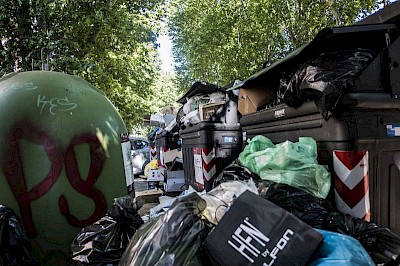Trends and drivers in waste to energy
 Following a seminar on the topic, the International Energy Agency (IEA) has published a report exploring the latest trends in advanced thermal treatment of municipal solid waste.
Following a seminar on the topic, the International Energy Agency (IEA) has published a report exploring the latest trends in advanced thermal treatment of municipal solid waste.
According to the IEA, the advanced thermal conversion of waste is attracting growing interest. The main reason is the increased awareness of greenhouse gas emissions and environmental pollution resulting from untreated waste. As an alternative to waste incineration, conversion options such as waste pyrolysis, waste gasification, and co-processing of biomass and waste are aimed at the production of energy carriers such as liquid fuels and higher value chemicals. These waste options thus contribute to climate and environmental goals.
In a recent online presentation, Dieter Stapf of Karlsruhe Institute of Technology (KIT), a member of the IEA’s Task 36 team, explained some of the progress made so far in the application of waste to energy technologies, the challenges that are being faced and the status of these technologies.
He explains that one of the key drivers for increasing the implementation of waste to energy is landfill tax. “Where there are high landfill taxes, such as in the UK, there is a strong implementation of thermal treatment. We also see thermal treatment being used in some countries where waste cannot be recycled and there is no real option of the landfill, for example in Germany and Sweden.” He also notes that across the EU, landfill is to be significantly reduced under the latest legislation.
Gasification for energy
According to the report, the application of gasification to generate second-generation synthetic biofuels is currently at the demonstration stage. Here, highly developed gasification technology is applied to heterogeneous, pre-treated feedstock closer to waste. Furthermore, attempts to generate more bioenergy-based electricity have resulted in the installation of some hundred small-scale and easy-to-run decentralized gasifiers, mainly in Europe, over the past decade, but with lower overall process efficiency. Hydrothermal treatment of biomass has not been of significant relevance to date.
The authors go on to reference the UK, where there have been recent gasification-based WtE projects. In these mostly air-blown waste gasification applications applied as “two-stage combustion”, gasification process chains are more complex and less mature than best available incineration techniques, thus resulting in higher waste treatment costs.
Also highlighted is a 100 MW bubbling fluidized-bed gasifier at the CEMEX cement plant in Rüdersdorf, Germany. The air-blown gasification of RDF provides the fuel gas for the calciner, based on 100% waste feedstock which is not specifically pre-treated for this purpose.
Gasification for chemical recycling
The first applications of gasification technologies for waste feedstock recycling were driven by attempts to recycle plastics in the late 20th century. “There are some large-scale applications of thermochemical recycling plastic waste such as the Enerkem plant in Canada which produces methanol from residual household waste,” notes Stapf.
The report explains that in Edmonton, Canada, Enerkem has been operating an RDF-to-methanol process since 2017. It is based on its own proprietary technology that has been developed over a relatively long period of time and in several projects and plants of different sizes. Further projects have been announced in various countries. Again, this process uses bubbling fluidized-bed gasification technology and staged addition of oxidants.
The fluidized bed is operated at temperatures below 700°C due to the low RDF ash melting point, followed by a freeboard at higher temperatures to minimize tar formation. After flue gas treatment and re-circulating of the tars to the fluidized-bed reactor, a proprietary methanol-to-ethanol process is applied on a smaller scale. Reactor overpressure and capacity are smaller than for the processes mentioned above.
Conclusions
Promoting alternative thermal waste treatment technologies such as pyrolysis and gasification goes hand-in-hand with waste management system optimization with the overall aim of reducing greenhouse gas emissions and minimizing the environmental impact. Along with an increasing demand for recycled feedstock and a limited ability to carry out more physical separation, declining social acceptance of incineration in combination with subsidies are drivers for investment into alternative thermal treatment.
You can return to the main Market News page, or press the Back button on your browser.

